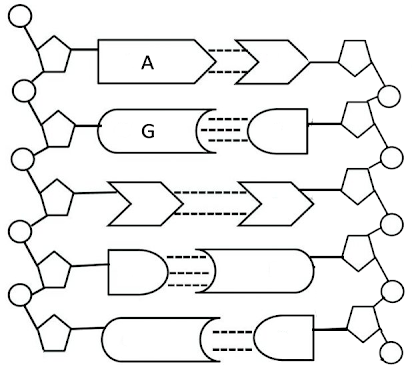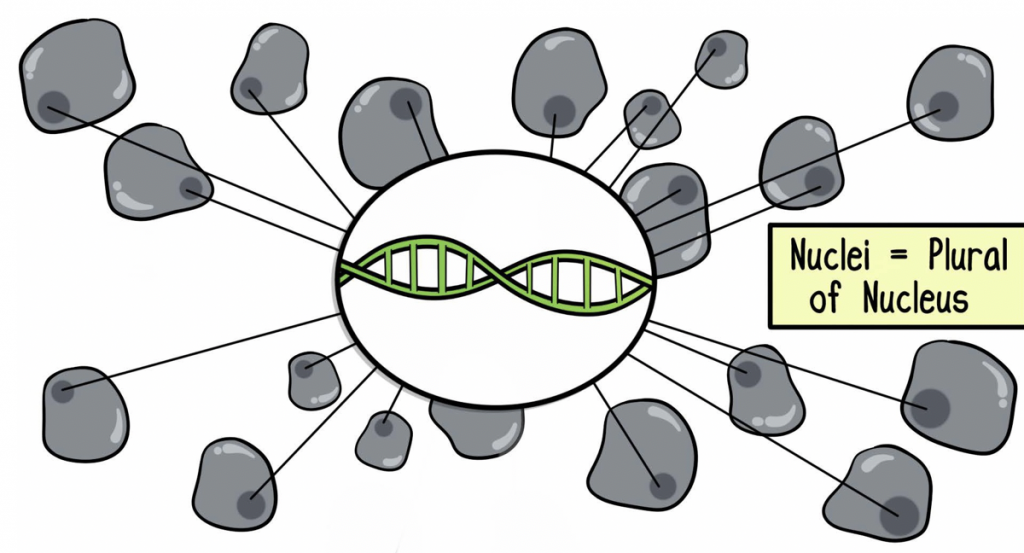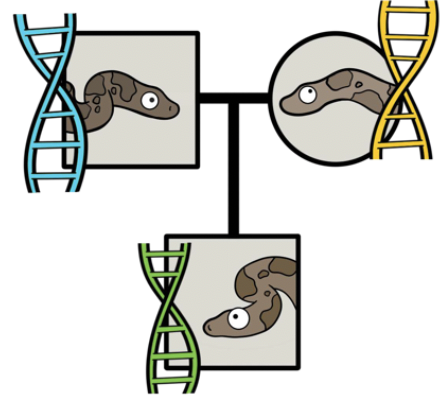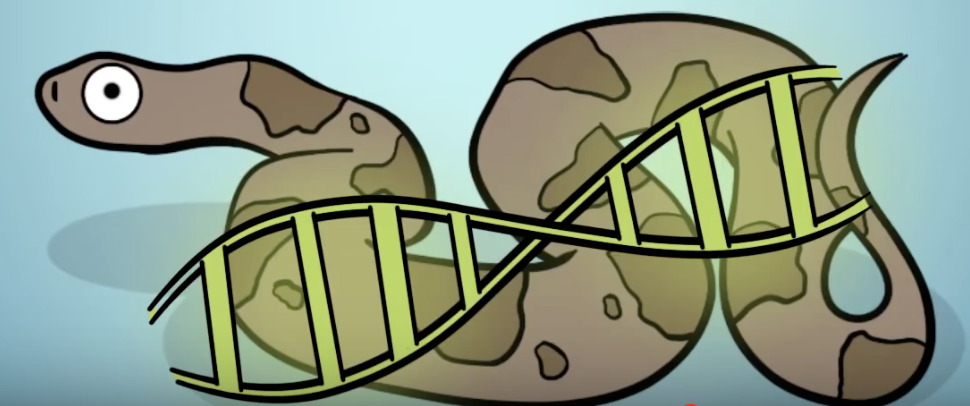©Amoeba sisters
I- Vocabulary
The vocabulary below is very important for understanding heredity!
Complete the table using your own words and creativity.
| Name | Illustrate! | Explain it in Your Own Words | What’s its Significance? (Why does it Matter?) | Real Life Example |
| DNA | 1. | 2. | 3. | DNA found in the body cell of a snake |
| Chromosome | 4. | 5. | Chromosomes allow the large amount of DNA to be compacted. One reason this is significant is in cell division as it makes it much easier for the cells to put these units into the new cells. | 6. |
| Gene | 7. | 8. | 9. | One of many genes that can code for a protein involved in eye pigment |
| Trait | 10. | 11. | 12. | 13. |
B- DNA Structure
For the diagram below, please label the following words on the diagram.
(A) Deoxyribose (sugar), (B) Phosphate, and (C) Nitrogenous Base.

- Based on the definition, how many nucleotides do you see in this diagram?
- What are the four different types of bases in DNA and how do they pair?
C- The universal language of life
A Picture Says It! Explain what this image represents regarding where your entire DNA code can be found.


- When studying heredity, what is the relationship of DNA bases and traits?
- Apply Your Understanding:
Spike is not a clone of his father. He inherited DNA from both of his parents. Chromosomes are condensed units of DNA. If Spike has 36 chromosomes, you would expect that Spike would have inherited ___?___ chromosomes from his mother and ___?___ chromosomes from his father.
3. How did you determine the chromosome numbers and how does that relate to heredity?
D- Mutations
As mentioned in the video, the environment can also affect an organism’s traits. The example of nourishment was used in thecase for Spike, as this could affect his growth and size. This can also occur in humans. UV light was not mentioned in the video. How could UV light potentially affect an organism’s trait? Provide one example.
RECAP
Identify some of the vocabulary you worked with bylabeling them on this illustration:
DNA, Gene, Chromosome, Nucleotide, PhosphateDeoxyribose (sugar), Nitrogenous Base.

